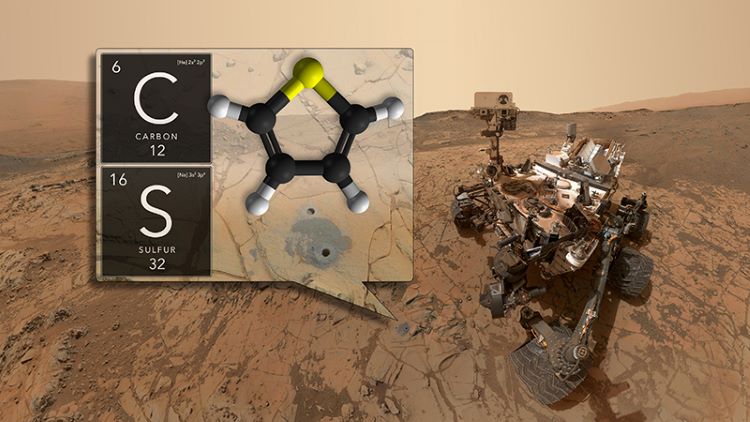Universe Today has recently had the privilege of investigating a myriad of scientific disciplines, including impact craters, planetary surfaces, exoplanets, astrobiology, solar physics, comets, planetary atmospheres, planetary geophysics, cosmochemistry, meteorites, radio astronomy, and extremophiles, and how these multidisciplinary fields can help both scientists and space fans better understand how they relate to potentially finding life beyond Earth, along with other exciting facets. Here, we will examine the incredible field of organic chemistry with Dr. Andro Rios, who is an Assistant Professor in Organic Chemistry at San José State University, regarding why scientists study organic chemistry, the benefits and challenges, finding life beyond Earth, and potential paths for upcoming students. So, why is it so important to study organic chemistry?
Continue reading “Organic Chemistry: Why study it? What can it teach us about finding life beyond Earth?”How Did Life Get Started on Earth? Atmospheric Haze Might Have Been the Key
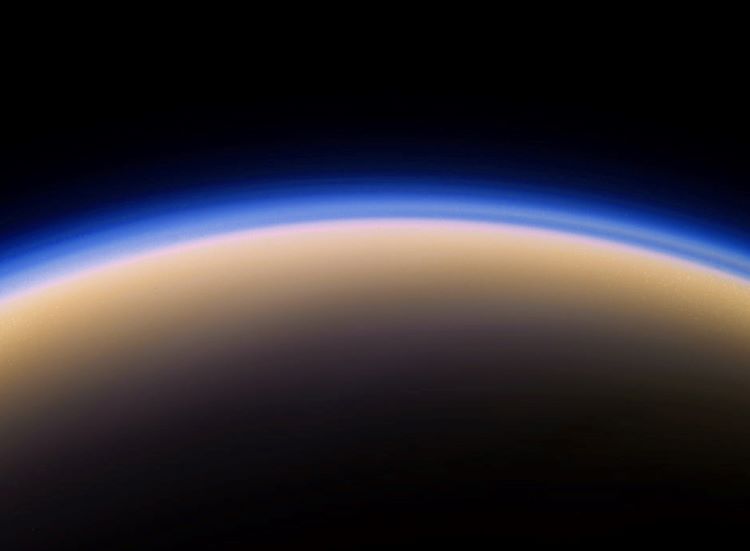
A recent study accepted to The Planetary Science Journal investigates how the organic hazes that existed on Earth between the planet’s initial formation and 500 million years afterwards, also known as Hadean geologic eon, could have contained the necessary building blocks for life, including nucleobases and amino acids. This study holds the potential to not only help scientists better understand the conditions on an early Earth, but also if these same conditions on Saturn’s largest moon, Titan, could produce the building blocks of life, as well.
Continue reading “How Did Life Get Started on Earth? Atmospheric Haze Might Have Been the Key”Venus has Clouds of Concentrated Sulfuric Acid, but Life Could Still Survive
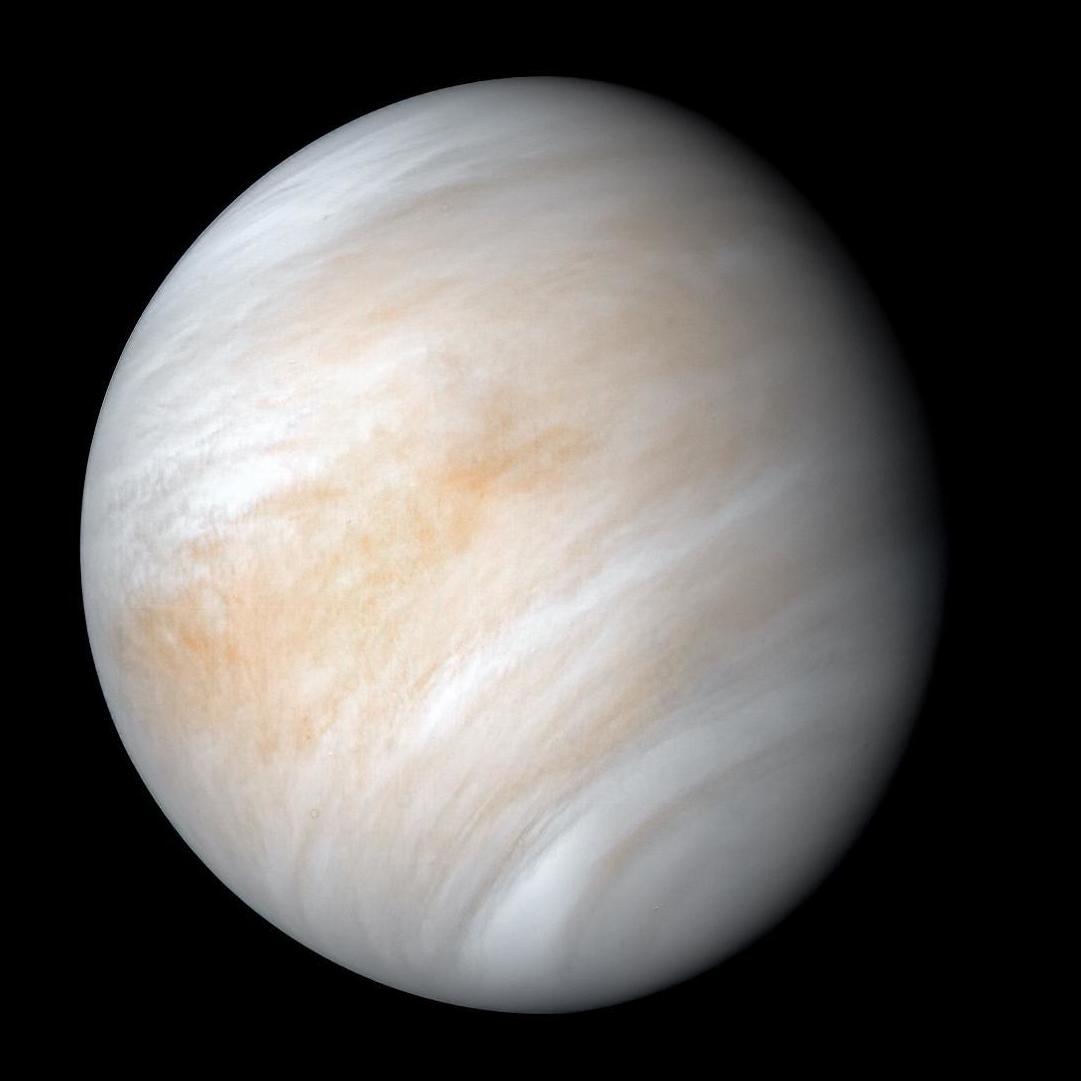
The surface of Venus is like a scene from Dante’s Inferno – “Abandon all hope, ye who enter here!” and so forth. The temperature is hot enough to melt lead, the air pressure is almost one hundred times that of Earth’s at sea level, and there are clouds of sulfuric acid rain to boot! But roughly 48 to 60 km (30 to 37.3 mi) above the surface, the temperatures are much cooler, and the air pressure is roughly equal to Earth’s at sea level. As such, scientists have speculated that life could exist above the cloud deck (possibly in the form of microbes) as it does on Earth.
Unfortunately, these clouds are not composed of water but of concentrated sulfuric acid, making the likelihood that life could survive among them doubtful. However, a new study led by scientists from the Massachusetts Institute of Technology (MIT) reveals that the basic building blocks of life (nucleic acid bases) are stable in concentrated sulfuric acid. These findings indicate that Venus’ atmosphere could support the complex chemistry needed for life to survive, which could have profound implications in the search for habitable planets and extraterrestrial life.
Continue reading “Venus has Clouds of Concentrated Sulfuric Acid, but Life Could Still Survive”The Raw Materials for Life Form Early on in Stellar Nurseries
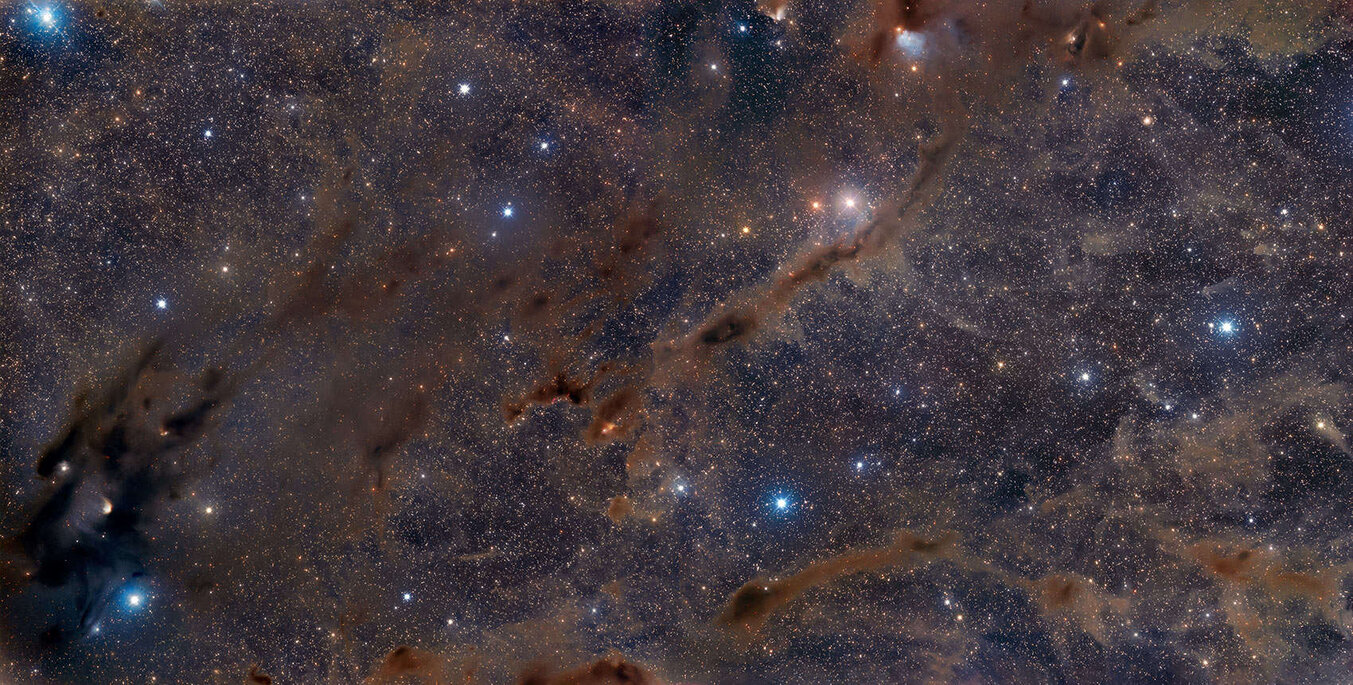
Life doesn’t appear from nothing. Its origins are wrapped up in the same long, arduous process that creates the elements, then stars, then planets. Then, if everything lines up just right, after billions of years, a simple, single-celled organism can appear, maybe in a puddle of water on a hospitable planet somewhere.
It takes time for the building blocks of stars and planets to assemble in space, and the building blocks of life are along for the ride. But there are significant gaps in our understanding of how all that works. A new study is filling in one of those gaps.
Continue reading “The Raw Materials for Life Form Early on in Stellar Nurseries”Comet Impacts Could Have Brought the Raw Ingredients for Life to Europa’s Ocean
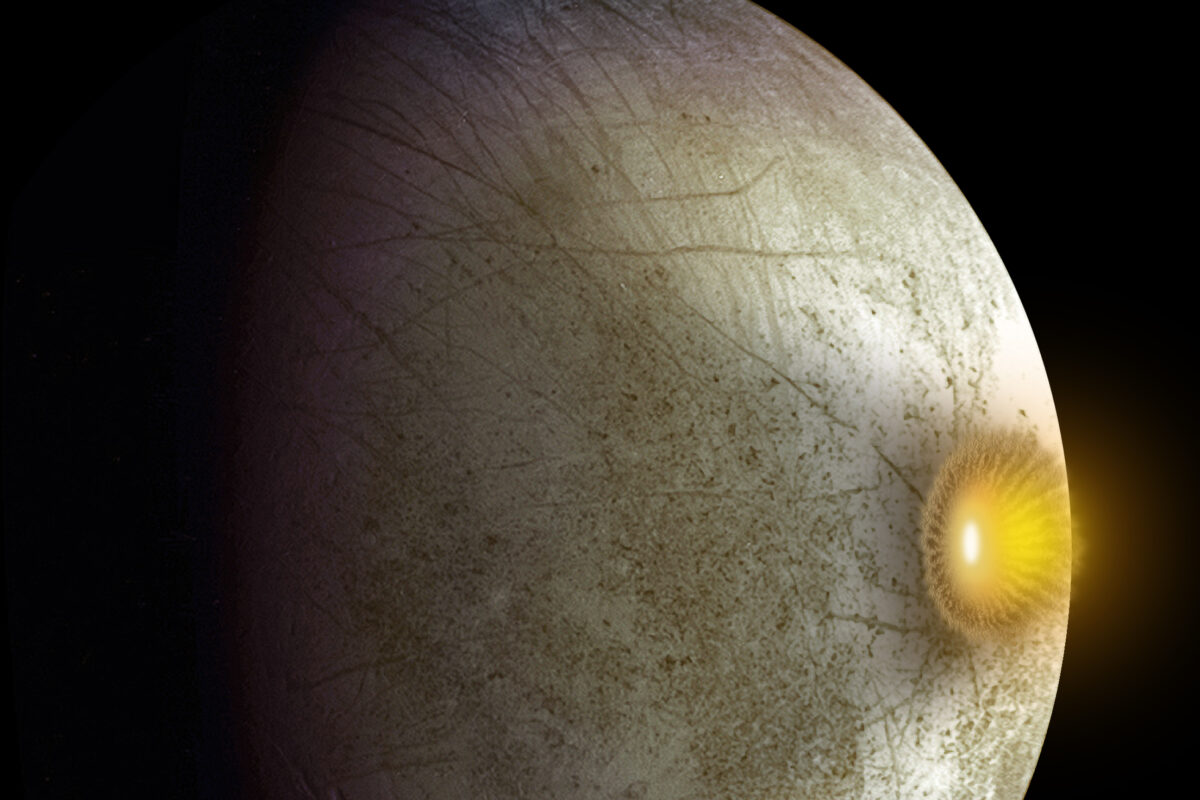
Jupiter is the most-visited planet in the Solar System, thanks largely to NASA. It all started with Pioneer 10 and 11, followed by Voyager 1 and 2. Those were all flyby missions, and it wasn’t until 1996 that the Galileo spacecraft became the first to orbit the gas giant and even send a probe into its atmosphere. Then in 2016, the Juno spacecraft entered orbit around Jupiter and is still there today.
All of these missions were focused on Jupiter, but along the way, they gave us tantalizing hints of the icy moon Europa. The most impactful thing we’ve learned is that Europa, though frozen on the surface, holds an ocean under all that ice. And that warm, salty ocean might contain more water than all of Earth’s oceans combined.
Might it hold life?
Continue reading “Comet Impacts Could Have Brought the Raw Ingredients for Life to Europa’s Ocean”It Appears That Enceladus is Even More Habitable Than we Thought
The problem with looking for life on other worlds is that we only know of one planet with life. Earth has a wondrous variety of living creatures, but they all evolved on a single world, and their heritage stems from a single tree of life. So astrobiologists have to be both clever and careful when looking for habitable worlds, even when they narrow the possibilities to life similar to ours.
Continue reading “It Appears That Enceladus is Even More Habitable Than we Thought”One of the Building Blocks of Life Can Form in the Harsh Environment of Deep Space Itself. No Star Required

In many ways, stars are the engines of creation. Their energy drives a whole host of processes necessary for life. Scientists thought that stellar radiation is needed to create compounds like the amino acid glycine, one of the building blocks of life.
But a new study has found that glycine detected in comets formed in deep interstellar space when there was no stellar energy.
Continue reading “One of the Building Blocks of Life Can Form in the Harsh Environment of Deep Space Itself. No Star Required”Curiosity Finds Organic Molecules That Could Have Been Produced by Life on Mars

What do coal, crude oil, and truffles have in common? Go ahead. We’ll wait.
The answer is thiophenes, a molecule that behaves a lot like benzene. Crude oil, coal, and truffles all contain thiophenes. So do a few other substances. MSL Curiosity found thiophenes on Mars, and though that doesn’t conclusively prove that Mars once hosted life, its discovery is an important milestone for the rover. Especially since truffles are alive, and oil and coal used to be, sort of.
Continue reading “Curiosity Finds Organic Molecules That Could Have Been Produced by Life on Mars”A Jarful of Titan Could Teach Us A Lot About Life There, and Here On Earth

Titan is a distant, exotic, and dangerous world. It’s frigid temperatures and hydrocarbon chemistry is like nothing else in the Solar System. Now that NASA is heading there, some researchers are getting a jump on the mission by recreating Titan’s chemistry in jars.
Continue reading “A Jarful of Titan Could Teach Us A Lot About Life There, and Here On Earth”Dragonfly Proposed to NASA as Daring New Frontiers Mission to Titan
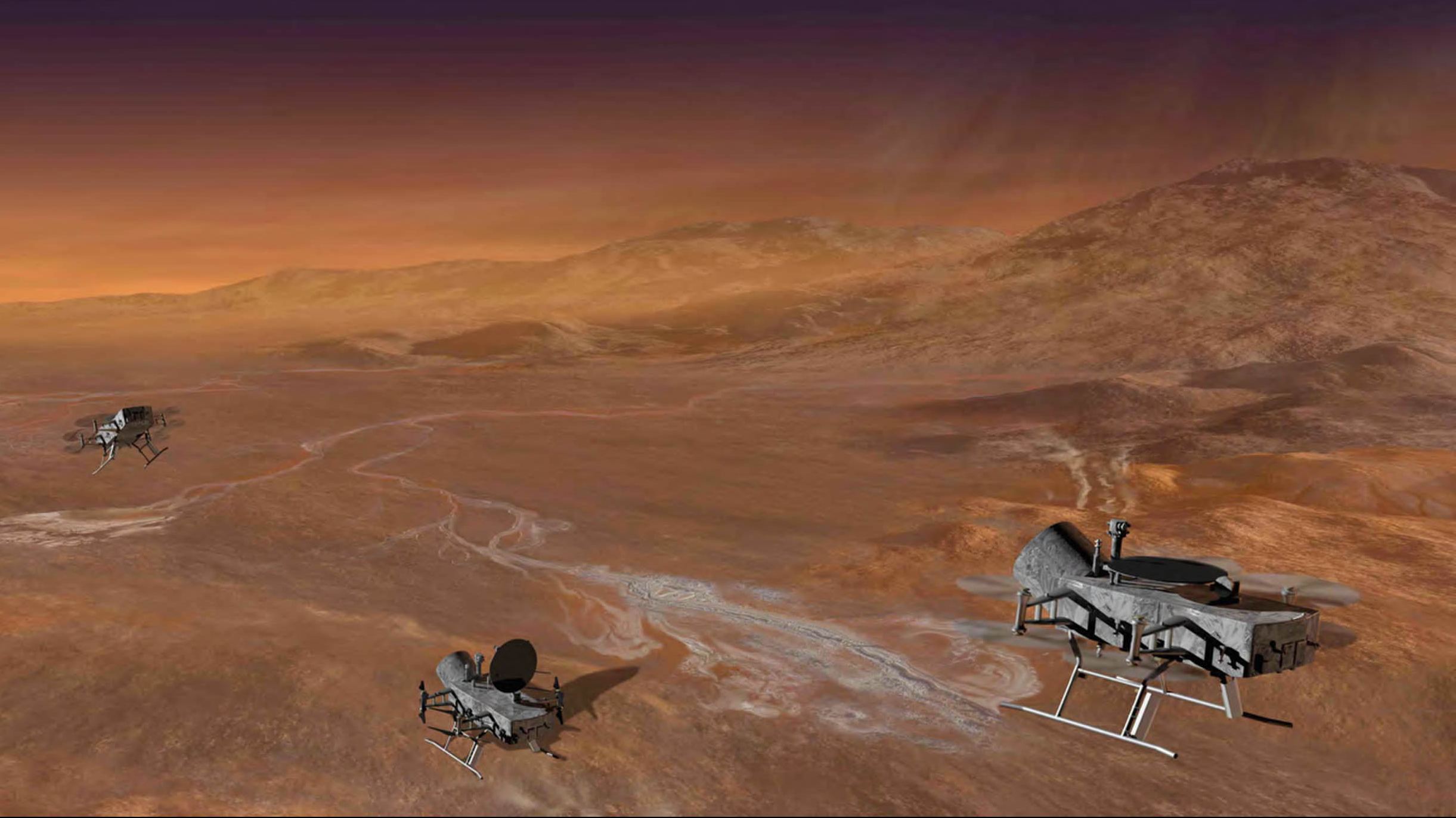
In late 1970s and early 80s, scientists got their first detailed look at Saturn’s largest moon Titan. Thanks to the Pioneer 11 probe, which was then followed by the Voyager 1 and 2 missions, the people of Earth were treated to images and readings of this mysterious moon. What these revealed was a cold satellite that nevertheless had a dense, nitrogen-rich atmosphere.
Thanks to the Cassini-Huygens mission, which reached Titan in July of 2004 and will be ending its mission on September 15th, the mysteries of this moon have only deepened. Hence why NASA hopes to send more missions there in the near future, like the Dragonfly concept. This craft is the work of the John Hopkins University Applied Physics Laboratory (JHUAPL), which they just submitted an official proposal for.
Essentially, Dragonfly would be a New Frontiers-class mission that would use a dual-quadcopter setup to get around. This would enable vertical-takeoff and landing (VTOL), ensuring that the vehicle would be capable of exploring Titan’s atmosphere and conducting science on the surface. And of course, it would also investigate Titan’s methane lakes to see what kind of chemistry is taking place within them.

The goal of all this would be to shed light on Titan’s mysterious environment, which not only has a methane cycle similar to Earth’s own water cycle, but is rich in prebiotic and organic chemistry. In short, Titan is an “ocean world” of our Solar System – along with Jupiter’s moons Europa and Ganymede, and Saturn’s moon of Enceladus – that could contain all the ingredients necessary for life.
What’s more, previous studies have shown that the moon is covered in rich deposits of organic material that are undergoing chemical processes, ones that might be similar to those that took place on Earth billions of years ago. Because of this, scientists have come to view Titan as a sort of planetary laboratory, where the chemical reactions that may have led to life on Earth could be studied.
As Elizabeth Turtle, a planetary scientist at JHUAPL and the principal investigator for the Dragonfly mission, told Universe Today via email:
“Titan offers abundant complex organics on the surface of a water-ice-dominated ocean world, making it an ideal destination to study prebiotic chemistry and to document the habitability of an extraterrestrial environment. Because Titan’s atmosphere obscures the surface at many wavelengths, we have limited information about the materials that make up the surface and how they’re processed. By making detailed surface composition measurements in multiple locations, Dragonfly would reveal what the surface is made of and how far prebiotic chemistry has progressed in environments that provide known key ingredients for life, identifying the chemical building blocks available and processes at work to produce biologically relevant compounds.”
In addition, Dragonfly would also use remote-sensing observations to characterize the geology of landing sites. In addition to providing context for the samples, it would also allow for seismic studies to determine the structure of the Titan and the presence of subsurface activity. Last, but not least, Dragonfly would use meteorology sensors and remote-sensing instruments to gather information on the planet’s atmospheric and surface conditions.
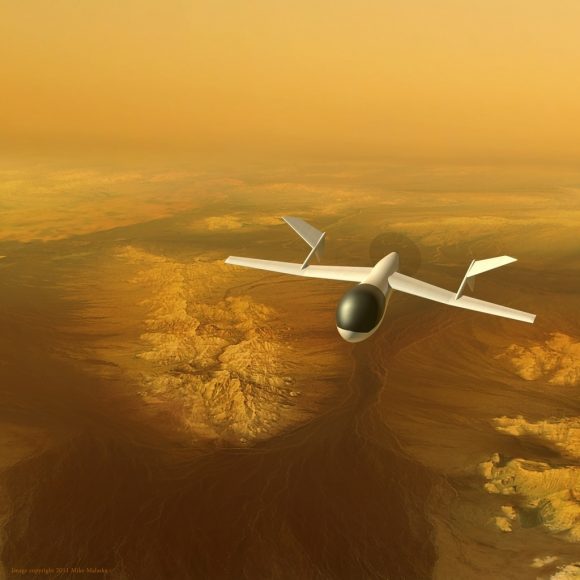
While multiple proposals have been made for a robotic explorer mission of Titan, most of these have taken the form of either an aerial platforms or a combination balloon and a lander. The Aerial Vehicle for In-situ and Airborne Titan Reconnaissance (AVIATR), a proposal made in the past by Jason Barnes and a team of researchers from the University of Idaho, is an example of the former.
In the latter category, you have concepts like the Titan Saturn System Mission (TSSM), a concept that was being jointly-developed by the European Space Agency (ESA) and NASA. An Outer Planets Flagship Mission concept, the design of the TSSM consisted of three elements – a NASA orbiter, an ESA-designed lander to explore Titan’s lakes, and an ESA-designed Montgolfiere balloon to explore its atmosphere.
What separates Dragonfly from these and other concepts is its ability to conduct aerial and ground-based studies with a single platform. As Dr. Turtle explained:
“Dragonfly would be an in situ mission to perform detailed measurements of Titan’s surface composition and conditions to understand the habitability of this unique organic-rich ocean world. We proposed a rotorcraft to take advantage of Titan’s dense, calm atmosphere and low gravity (which make flight easier on Titan than it is on Earth) to convey a capable suite of instruments from place to place — 10s to 100s of kilometers apart — to make measurements in different geologic settings. Unlike other aerial concepts that have been considered for Titan exploration (of which there have been several), Dragonfly would spend most of its time on the surface performing measurements, before flying to another site.”
Dragonfly‘s suite of instruments would include mass spectrometers to study the composition of the surface and atmosphere; gamma-ray spectrometers, which would measure the composition of the subsurface (i.e. looking for evidence of an interior ocean); meteorology and geophysics sensors, which would measure wind, atmospheric pressure, temperature and seismic activity; and a camera suite to snap pictures of the surface.
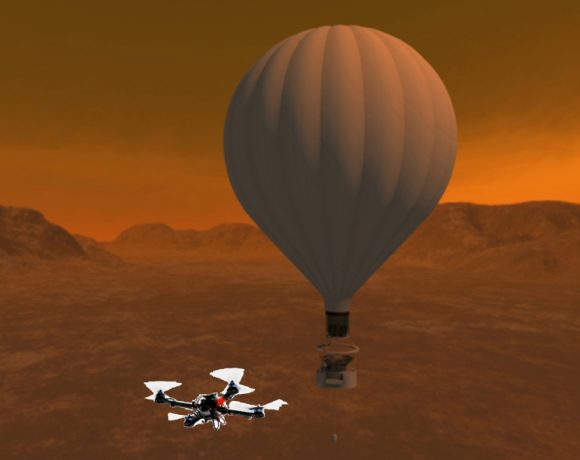
Given Titan’s dense atmosphere, solar cells would not be an effective option for a robotic mission. As such, the Dragonfly would rely on a Multi-Mission Radioisotope Thermoelectric Generator (MMRTG) for power, similar to what the Curiosity rover uses. While robotic missions that rely on nuclear power sources are not exactly cheap, they do enable missions that can last for years at a time and conduct invaluable research (as Curiosity has shown).
As Peter Bedini – the Program Manager at the JHUAPL Space Department and Dragonfly’s project manager – explained, this would allow for a long-term mission with significant returns:
“We could take a lander, put it on Titan, take these four measurements at one place, and significantly increase our understanding of Titan and similar moons. However, we can multiply the value of the mission if we add aerial mobility, which would enable us to access a variety of geologic settings, maximizing the science return and lowering mission risk by going over or around obstacles.”
In the end, a mission like Dragonfly would be able to investigate how far prebiotic chemistry has progressed on Titan. These types of experiments, where organic building blocks are combined and exposed to energy to see if life emerges, cannot be performed in a laboratory (mainly because of the timescales involved). As such, scientists hope to see how far things have progressed on Titan’s surface, where prebiotic conditions have existed for eons.
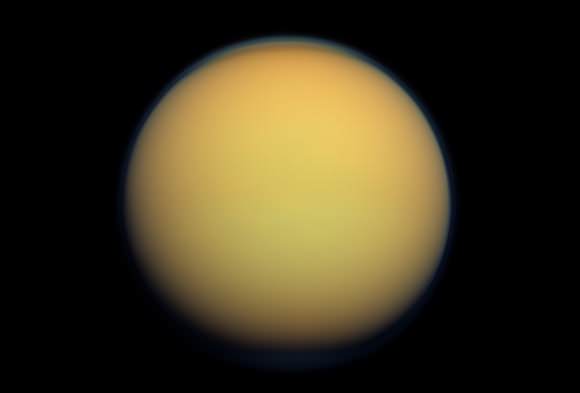
In addition, scientists will also be looking for chemical signatures that indicate the presence of water and/or hydrocarbon-based life. In the past, it has been speculated that life could exist within Titan’s interior, and that exotic methanogenic lifeforms could even exist on its surface. Finding evidence of such life would challenge our notions of where life can emerge, and greatly enhance the search for life within the Solar System and beyond.
As Dr. Turtle indicated, mission selection will be coming soon, and whether or not the Dragonfly mission will be sent to Titan should be decided in just a few years time:
“Later this fall, NASA will select a few of the proposed New Frontiers missions for further work in Phase A Concept Studies” she said. “Those studies would run for most of 2018, followed by another round of review. And the final selection of a flight mission would be in mid-2019… Missions proposed to this round of the New Frontiers Program would be scheduled to launch before the end of 2025.”
And be sure to check out this video of a possible Dragonfly mission, courtesy of the JHUAPL:
Further Reading: JHU Hub

